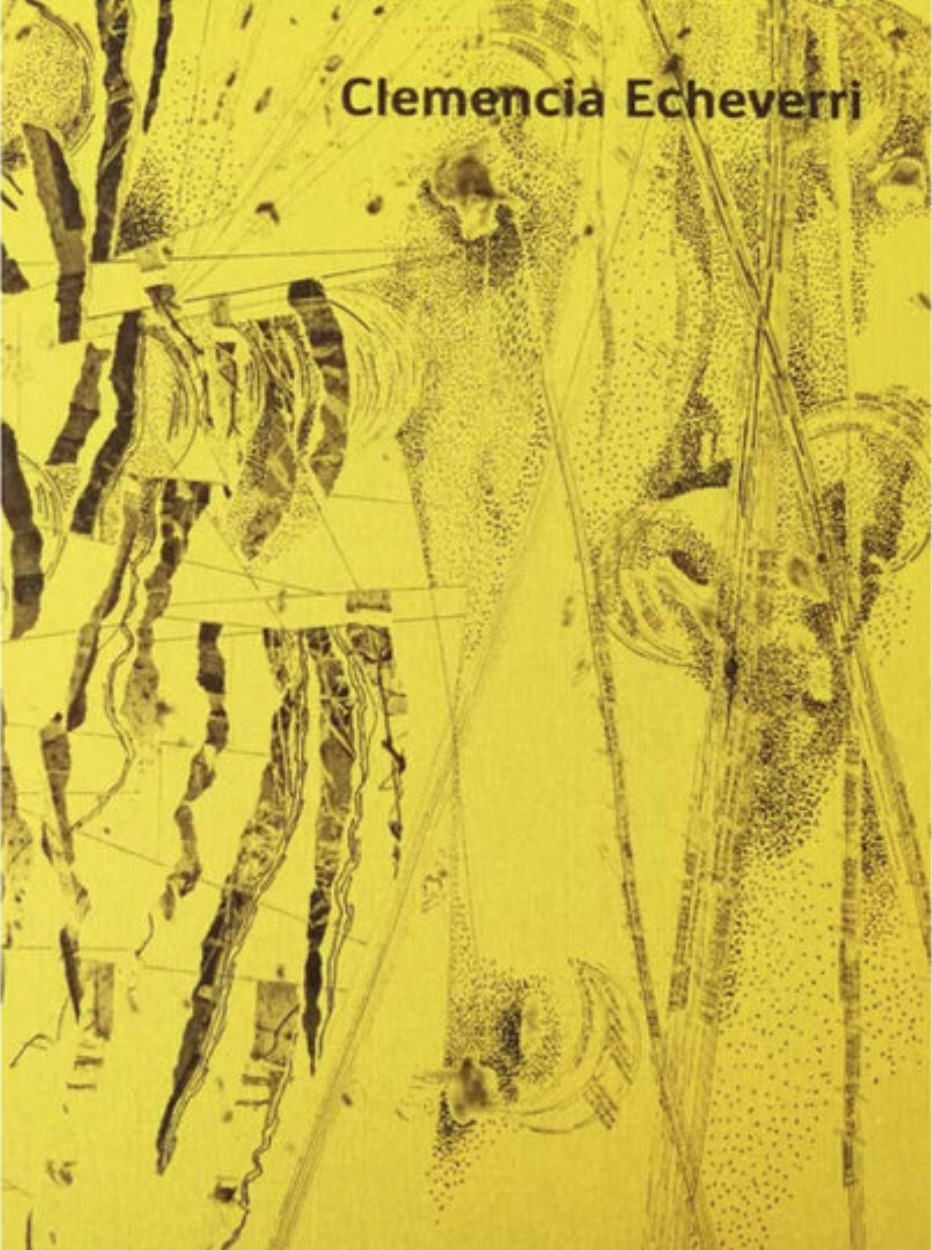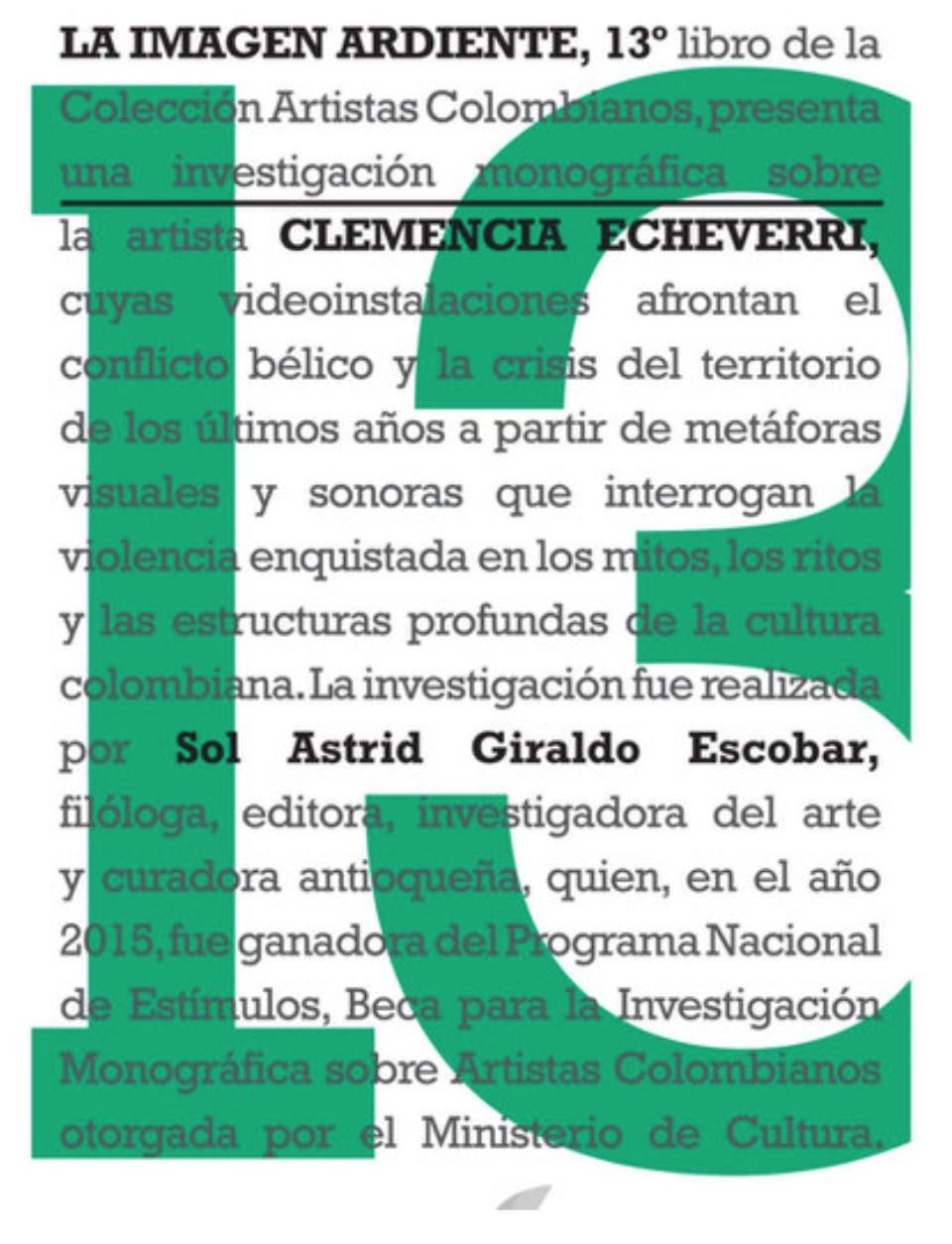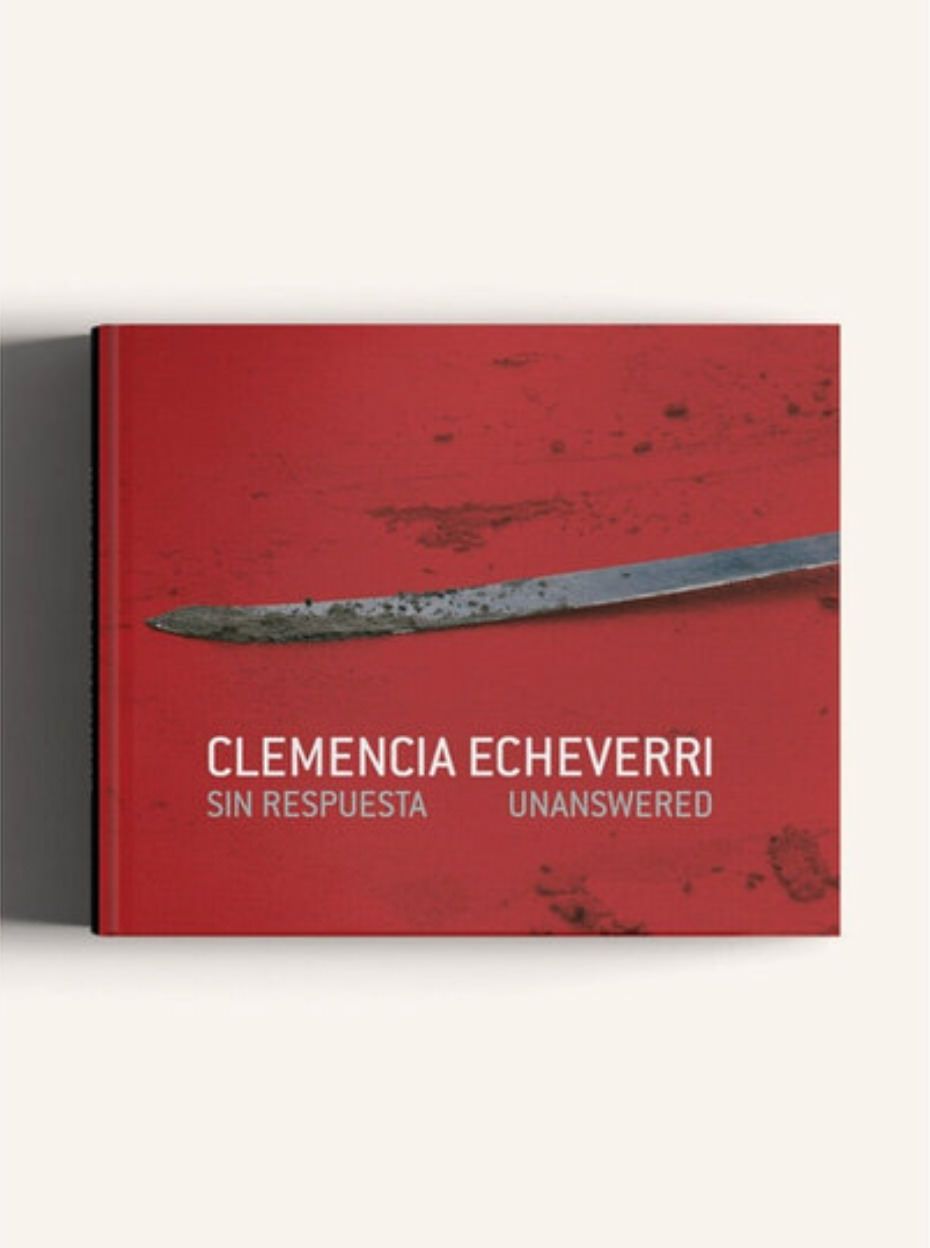Biography
Born in Salamina, Caldas, in 1950. She lives and works in Bogotá. She studied Visual Communication at the Universidad Pontificia Bolivariana and Visual Arts at the Universidad de Antioquia. At the postgraduate level, she completed a Master’s degree in Visual Arts and later studied Contemporary Art History and Theory at Chelsea College of Arts in London.
She taught undergraduate and graduate art for 27 years at the Universidad de Antioquia and the Universidad Nacional de Colombia. Her artistic career began with an emphasis on painting and later on sculpture. Since the 1990s she has explored problems related to violence, memory and the force of nature in Colombia. Through drawing, video, photography, video-installation, sound and interactivity, she creates projects that require field trips, research, social commitment and technology.
In 2023, she will be part of the Biennial of Cuenca (Ecuador) titled Quizá Mañana (Maybe Tomorrow). She will also participate in July in the annual exhibition Performing PAC in Milan with the work Treno and in Aunque haga Sombra with the work Versión Libre in a group exhibition at the Galería La Cometa, Bogotá.
Her retrospective LIMINAL/Clemencia Echeverri, curated by María Margarita Malagón, presented a selection of the last 20 years of her work. It was held at the Museo de Arte Miguel Urrutia (MAMU) of the Banco de la República de Colombia in 2019-20. On the other hand, from August 2019 to January 2020, the artist presented her work Duelos in “Fragmentos, Espacio de Arte y Memoria”; as part of the Premio a la Creación 2019 of the Museo Nacional de Colombia with support from the Ministry of Culture.
Restrospectiva Liminal, Museo Miguel Urrutia (MAMU), Banco de la República. Bogotá, 2019-20.
In recent years, she has made video-installation projects with participation in several national and international events, among which stand out: Deserere at the Espacio Continuo Gallery, Bogota and in the neighborhood of El Pozon, Cartagena with the support of the Magdalena Foundation. Sin Cielo, at the 23rd Biennial of Sydney and at Art Gallery of Guelph, Canada (2020-21). Treno at Here/Now: Current Visions of Colombia, Holland (2019). Rio por Asalto at the 12th Shanghai Biennale curated by Cuauhtemoc Medina, China (2018). Treno in La Vuelta, ‘Les Reencontres de la Photographie’; Arles, France (2017). Free Version in ‘From Medellin, A Colombian art scene’ at the Museé dárt Les Abattoirs; Toulouse, France (2017). Train in ‘Waterweavers’ at Bard Graduate Center; New York (2014), Casa de América; Washington (2015) and Conde Duque, Madrid (2015).
He also participated with Supervivencias in ‘Rencontres internationales’; Paris, France (2014). Juegos de Herencia in Instants Video 50 Ans d’Artvideo; Marselle, France (2013) and in Cosmovideografías Latinoamericanas at CENART, Mexico City (2011). Frontera at ‘Screen Video Festival’; Barcelona, Spain (2012). Voice at the Liverpool Biennial, England (2010). Treno in ‘For You’, Daros-Latinamerica Museum, Switzerland (2009). Quiasma at Ars Electronica, Spain (2005) and at ISEA2004 Arts Electronic Festival, Finland (2004). Casa íntima at the VI Havana Biennial, Cuba (2000).
On the other hand, her work has been published, such as: Liquid Ecologies in LatinAmerican and Caribbean Art, Routledge Advances in Art and Visual Studies, New York and London, edited by Lisa Blackmore and Liliana Gómez, Chapter: Acts of Remaining, Liliana Gómez. The Roar of the River Grows ever Louder by Gina Mc Daniel Tarver. Historias del Arte en Colombia, edited by Universidad de Los Andes (various authors), chapter: Duels. RIVUS Catalog, Biennial of Sydney, Australia. La Violencia y su Sombra, approaches from Colombia and Mexico by María Victoria Uribe and Rodrigo Parrini. Chapter: Art as resistance to the unheard: on Doris Salcedo’s Fragments and Clemencia Echeverri’s Duels by María del Rosario Acosta. Resistances to Oblivion. Law and Violence Group, María del Rosario Acosta. Chapter: The Song of the Lyre. Two figures of Mourning from Clemencia Echeverri’s TRENO, by Juan Diego Pérez Moreno. Article in Art Forum magazine: Clemencia Echeverri, Espacio Continuo, by Eugenio Viola.
Also, Trepidaciones, Collection of Contemporary Colombian Art; produced by the company Seguros Bolivar and curated by Jose Ignacio Roca and Alejandro Martin. Volume of three books with artists Juan Fernando Herrán and José Alejandro Restrepo, 2016. La Imagen Ardiente, by Sol Astrid Giraldo from the Colombian Artists Collection, produced by the Ministry of Culture, Colombia, 2017. Sin Respuesta, compilation of the artist’s works up to 2009, edited by Divulgación Cultural de la Universidad de Antioquia, (various authors).

Trepidaciones, 2016

La imagen ardiente, 2017

Sin respuesta, 2009
Of note are national and international awards, mentions and grants such as the Fragments Grant from the Colombian Ministry of Culture 2018-2019, the Arts Council London, the Daniel Langlois Foundation of Canada and the Colombian Biennial of the Arts Award.
Clemencia Echeverri’s work is part of the collections of museums and cultural institutions such as: Musee les Abattoirs, Toulouse, France; Ulrich Museum Collection, Kansas, and Museum of Latin American Art of Los Angeles (MOLAA), United States. Also from the Daros-Latinamerica Collection, Zurich, Switzerland; Latin American Art Collection, Essex, England; Museo Extremeño e Iberoamericano de Arte Contemporáneo (MEIAC), Badajoz, Spain; Museo Universitario de Arte Contemporáneao (MUAC), Mexico; Museo Nacional de Colombia, Fundación Gilberto Alzate Avendaño, Museo de Arte de la Universidad Nacional de Colombia and Colección del Banco de la República de Colombia, Bogotá.
In the last 15 years her video installation works stand out such as: Deserere, Duelos, Sin Cielo, Nóctulo, Sacrificio, Supervivencias, Treno, Juegos de Herencia, Versión Libre, Frontera, Voz resonancias de la prisión, Cal y Canto, Apetitos de Familia, De doble Filo and Casa íntima.
cem@clemenciaecheverri.com
“What Echeverri pursues are the apparitions, the unsaid and unresolved, what bursts untimely as a symptom, as that which resists symbolization, over the linearity and supposed clarity of official history. A country of wanderers, a country of specters, where history has become a fragmented nightmare, where shelter has lost its roof, where language has broken into unconnected whispers.
The artist’s proposal seeks to bring images to the realm of the non-image. To surround what has no name. To ask about what has no answer. To stroll with open eyes and sharp ears through places that are no longer places, inhabited by ghosts that cannot settle on earth or in their own bodies. The artist achieves this difficult journey by navigating on the dense skin of images”.
The burning image, Sol Astrid Giraldo.
